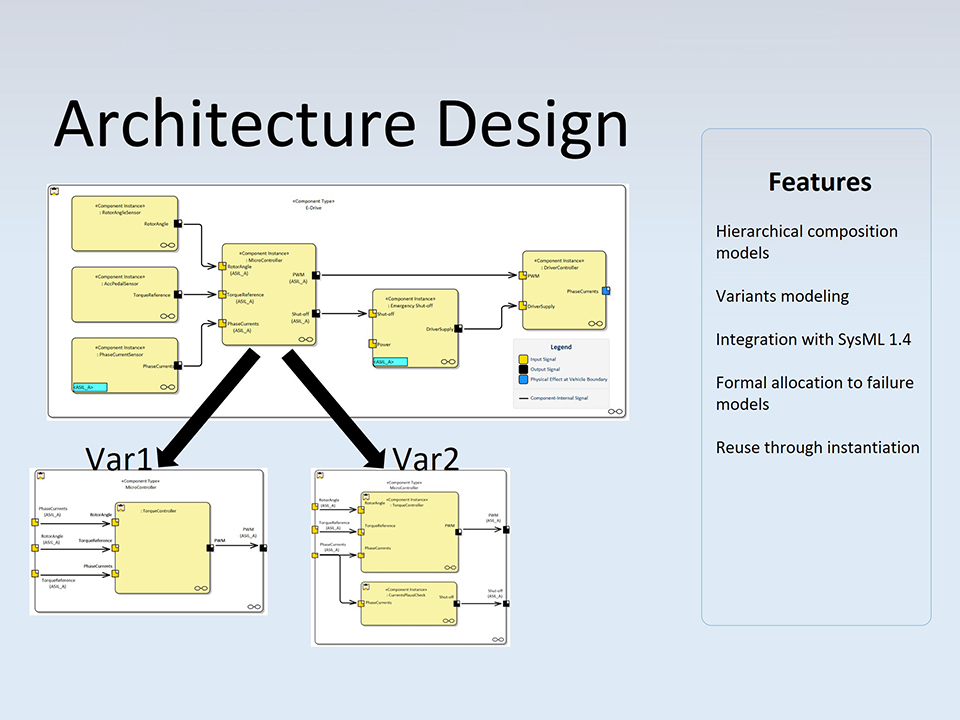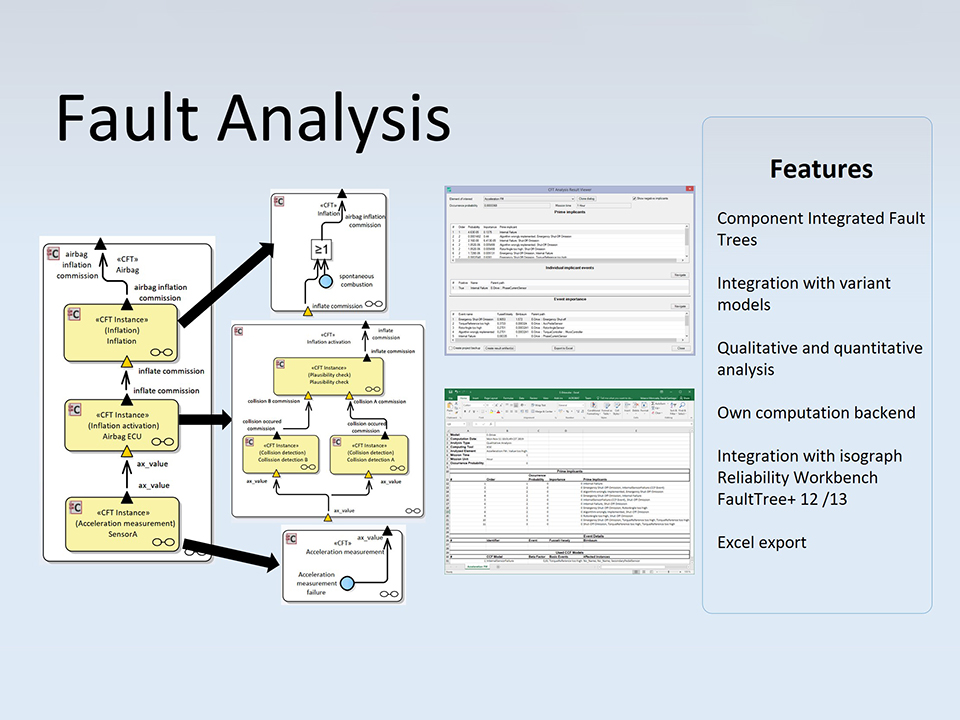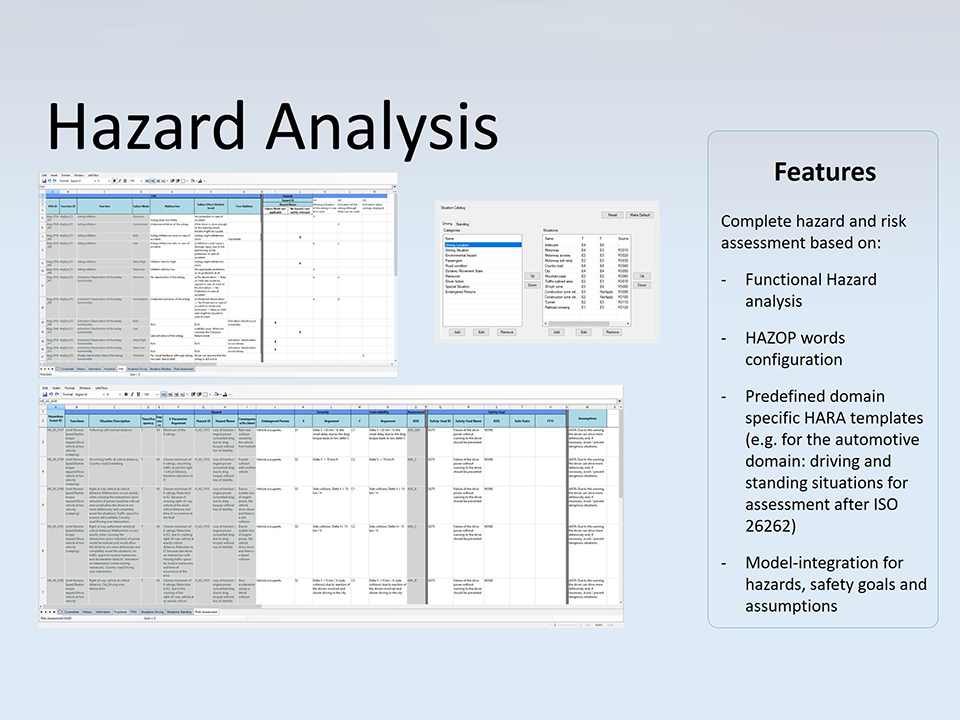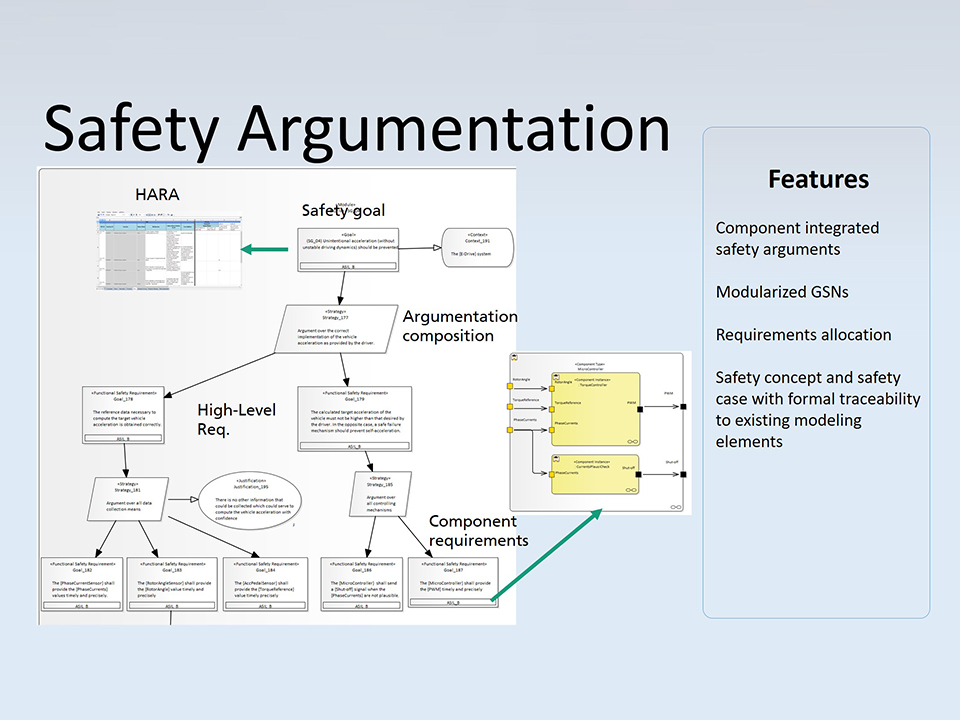How to ensure functional safety in development?
In the development of safety-critical systems, it is essential to guarantee functional safety. For this purpose, different analyses and development artifacts must be created in line with the specifications of relevant standards (e.g., IEC 61508, EN 50128, ISO 26262, ISO 25119, ISO 13849). From a tool perspective, this is currently being done primarily with document processing and spreadsheet tools such as Word and Excel. However, as the complexity of systems continues to increase, these tools reach their limits, so that important properties such as maintainability and traceability can no longer be guaranteed. Ultimately this results in problems regarding efficiency and quality, which in the best case only costs money and in the worst case human lives.




